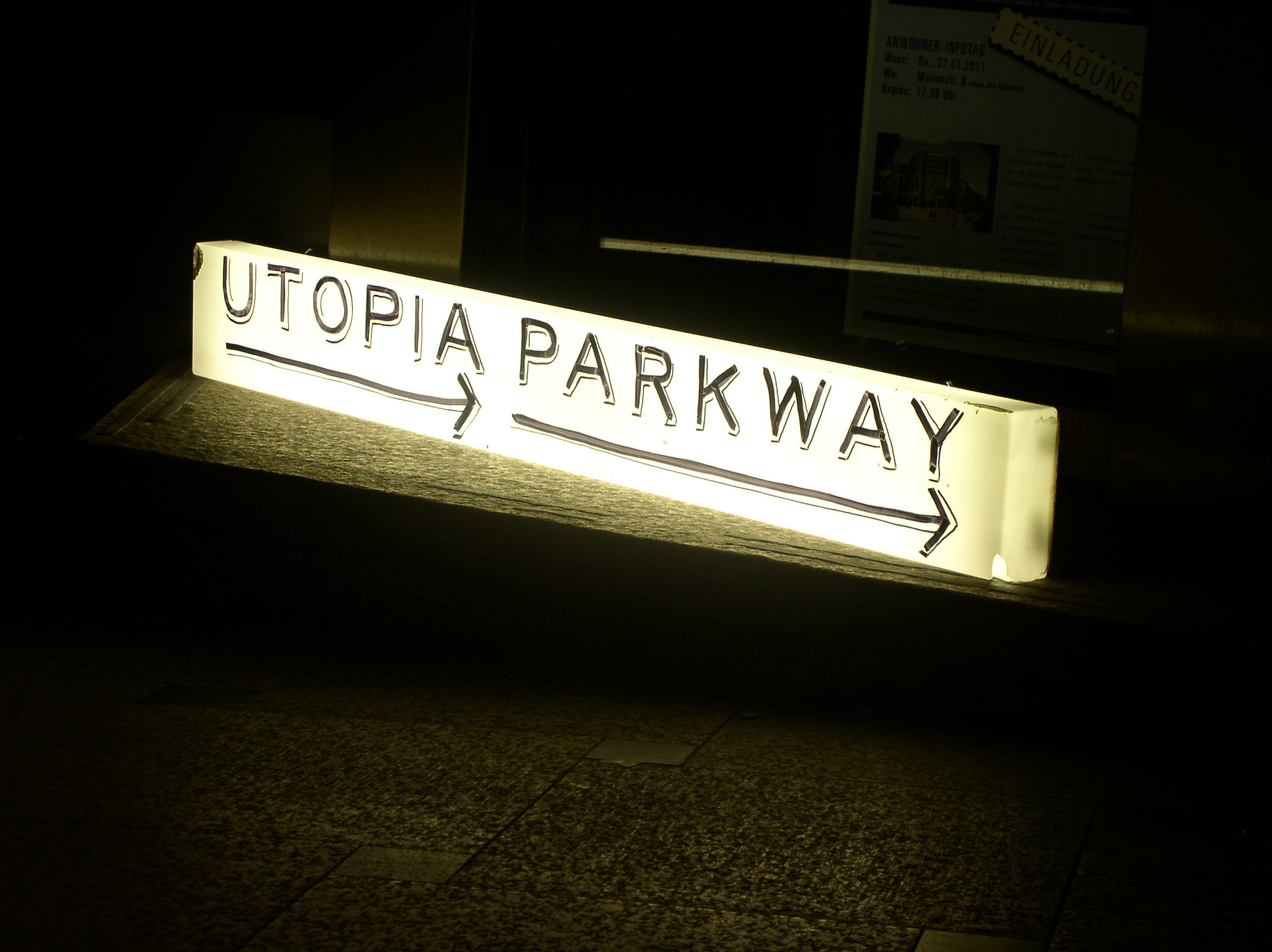|
LITR 5439 |
Literary & Historical Utopias: Model Assignments
Sample Essay 1 |
|
Meryl Bazaman
A2 Utopian Universality Conveyed by Earth Mother/ Primordial Nurturer
Literary Archetype
Utopias are easily regarded as us versus them, either/or, Western or
multicultural. In my previous works, I have routinely argued that utopias are
distinctively monocultural based on how architecture, clothing, intellectual
ideas all appear to be derived from Greco-Roman civilization.
My desire to challenge this assumption, however, inspired me to explore
what features a contemporary literary utopian alternative might possess. Is
there an essence that binds both the monocultural and multicultural utopias
through contemporary and revised shared archetypes that span across cultures and
time? Should these utopian unifiers be disregarded because of an individual’s
innate subjectivity or reexamined with individual bias taken into account?
If utopias appear to answer the question of what could be; is there the
slightest possibility that exploration of a single reoccurring literary
archetype found in utopian literature – that of Earth Mother or Primordial
Nurturer could occur universally? This essay is an exercise exploring how a
particular literary archetype of Earth Mother, whether consistent or redefined,
might provide a way to understand universality in Utopian Studies.
Literary archetypes are typically defined as recurring symbols or themes found
throughout time and across cultures. Inspired by Jungian theory, literary
archetypes typically alluded to the possibility of an innate, universal
rationale that projects itself through recurring symbols such as the earth
mother or family found throughout monocultural and multicultural literature. In
utopian literature, these traditional mother archetypes seemed to appear in
Gilman’s Herland and selections from
Harriet Jacobs’s Incidents in the Life of
a Slave Girl. Both authors conveyed the image of the quintessential earth
mother: the caring, loving woman or women who sustain and nourish their young.
Their mothers despite age and number are sexually identified as female, capable
of molding the earth in a way to provide sustenance for their young, and
nurturers to the core.
The Women of Herland live in land defined by maternity. Gilman’s Moadine
described this child-centric state of Motherhood as, “The children in this
country are the one center and focus of all our thoughts. Every step of our
advance is always considered in its effect on them-on the race. You see, we are
Mothers..” (Gilman, 66).
In Herland, the remaining animals have lost their wild dispositions so as
not to harm children. The trees’ fruit has been modified strictly to produce for
the consumption of children. Even particular traits have been minimized for the
sake of producing particular dispositions within children. The Women of Herland
have cultivated the production of their lives for the sake of their children. By
harnessing the advances of science, education, nutrition, biology, these earth
Women harness the land and the body for the sake of their young. The bountiful
earth and these bountiful, utopian earth- Mothers provide unconditionally in
unison at the “good place” of their conception.
The real world, dystopian American South also recorded utopian archetypes in its
literature.
Both Gilman’s Herland and Harriet
Jacobs’s Incidents in the Life of a Slave
Girl provide the reader with particular examples of the Earth Mother as a
utopian archetype. Variance, however, in how the Earth Mother is expressed and
who the Earth Mother is seems to offer contrary evidence to the Jung inspired
literary archetype. What if the Earth Mother is not sexually female, does not
provide dietary nourishment directly, or is not even a single individual which
is also an aspect of Herland? Does
the Earth Mother archetype become irrelevant or does it transform to incorporate
this new maternal entity? Could transforming this literary utopian archetype be
deconstructing mother into something more inclusive, more ancient in origin –
the primordial nurturer? Piercy,
Douglass, and Callenbach identify nurturers in their respective utopias. These
nurturers range from sexually androgynous, sexually male, and sexually male and
female with variation in gender roles, yet they share common base traits that
are identified in the utopian literature archetypes of an Earth Mother: each or
all provide nutrition, care, and intellectual development. They are linked not
simply by the physical boundaries of sex, gender, or number. They are linked by
their actions; their ability to give care and nourish the young of their
respective utopias.
Marge Piercy’s Woman on the Edge of Time has completely eradicated sex from the Earth Mother archetype. As technology has been exchanged for biology, humans are no longer restricted by gender roles or sex based expectations of gender roles. Rather, both men and women can completely, unabashedly share in this nurturer archetype. This is physically demonstrated by Piercy’s sexually male character Barbarossa as, “…he begun to nurse…” (Piercy, 134). Bearded Barbarossa does not possess a physical womb but his breast offers nourishment to the crying baby in the brooder. Piercy transforms motherhood into a collective of bisexual nurturers where children are products of all material and immaterial; truly nourished products of the world.
Frederick Douglass’s Narrative of the
Life of Frederick Douglass; an American Slave reverts to traditional sex
roles but offers an example of a male as nurturer. Douglass writes of Mr. Nathan
Johnson, “I was hungry, and he gave me meat; I was thirsty, and he gave me
drink; I was a stranger, and he took me in…”(Douglass, 3).Upon Douglass’s
arrival to Maryland, Johnson nurtured him. The Southern American dystopia
possessed males who beat, denied, and controlled substance. In the Utopian
American North of Maryland, male nurturers such as Nathan Johnson gave what they
could to their brothers whether it was meant for physical or mental consumption.
Nathan Johnson offered his figurative breast – a nurturing nature – that gave
Douglass access to the utopian care so in contrast to the Dystopia he had left
behind.
Callenbach’s Ecotopia interestingly
combines elements of the Earth Mother utopian archetype with the hypothesized
primordial nurturer archetype. Reporter William Weston reports of Ecotopia that,
“…in the nurturing of children while they are under two, women continue this
dominance; men participate extensively in the care and upbringing of the very
young, but in cases of conflict the mothers have the final say…the
fathers…evidently feel that their time of greater influence on the young will
come later…”(Callenbach, 70). Unlike Piercy or Douglass, Callenbach’s Ecotopian
nurturers are not androgynous or distinctively male. The women of Ecotopia still
physically rear and nurture their children. The gender based division of labor,
however, has changed substantially. Ecotopian men are now expected to
incorporate care giving into their sector of rearing. They are now active
nurturing agents in the lives of their children. Ecotopian men share in the
feeding, loving, and guidance of their young as equals bound by traditional
utopian archetypes.
Does the literary Mother Earth/ Primordial Nurturer literary archetype truly
provide a successful way to gauge universality in utopian literature? Gilman,
Jacobs, Piercy, Douglass, and Callenbach all utopian texts that span throughout
culture and time appear to share a variation of this archetype, but are
appearances deceiving? Is this collaborative phenomenon simply an elaborate work
of individual bias or a true exploration of a less charted utopian literature
definer? Can all utopias be explored through shared archetypes or must they be
explored based on what is perceived to be their disparate intentions?
Former student, Cana Hauerland states in her 2009 Final, “utopia is a universal
impulse, and the utopia in multi-cultural texts should be shared with, but
distinguished from the Western utopias with regards to the complex multi-culture
utopia.” Both Hauerland and I agree that utopias are universal; however, how we
demonstrate universality appears to be quite distinctive. Hauerland unifies her
utopian texts through the idea of them existing as “good places” and
distinguishing them through differentiating intentions. Whereas, I seek to
demonstrate universality by exploring and examining how the Mother Earth/
Primordial Nurturer archetype reemerges throughout time and culture in utopian
text. Is Hauerland’s analysis that far removed from my own?
If both Hauerland and I agree that utopias share certain permanent,
unchanging elements, could we not find different ways to draw similar
conclusions? I believe despite or respective bias and subjective motives; it is
feasible.
Utopias archetypes act like expansive mandalas with unifying core elements
rather than chaotic fragments that can only be perceived by select individuals
of particular racial, social, and geographical backgrounds during specific
points of history. Exploration of a single shared Mother Earth/Primordial
Nurturer archetype presents a feasibly argument that unifies a wide assortment
of utopian text that vary in cultural origin and throughout time.
Sources:
Callenbach, Ernest. Ecotopia. New York: Bantam Books, 1975. Print.
Douglass, Frederick. Narrative of the
Life of Frederick Douglass, an American Slave, n.p, 1845. Print.
Gilman, Charlotte. Herland. New York: Pantheon Books, 1979. Print.
Jacobs, Harriet. Incidents in the Life of
a Slave Girl, n.p. 1861. Print.


